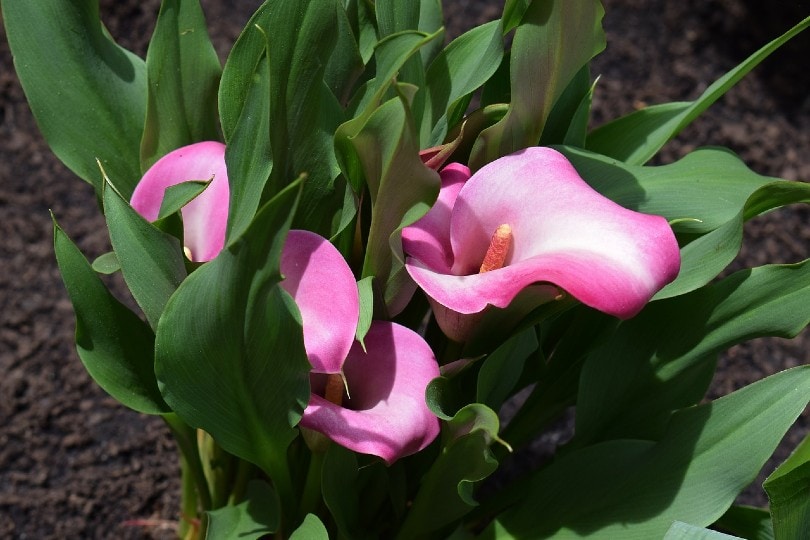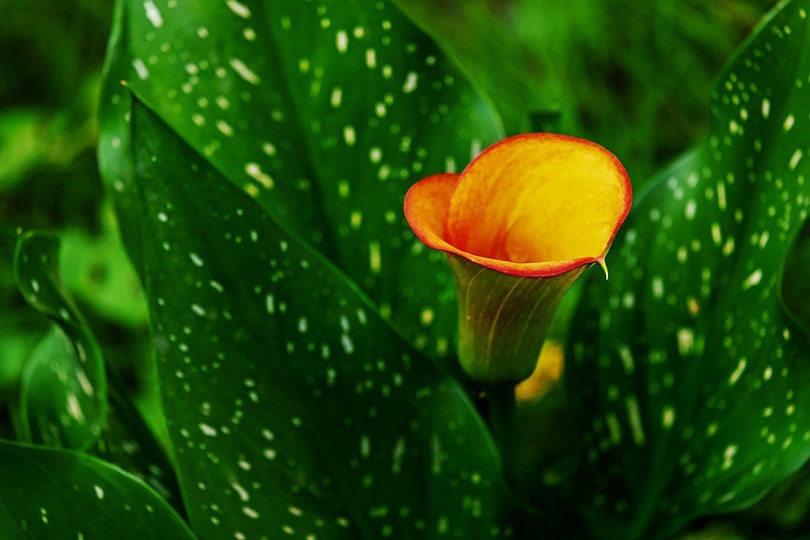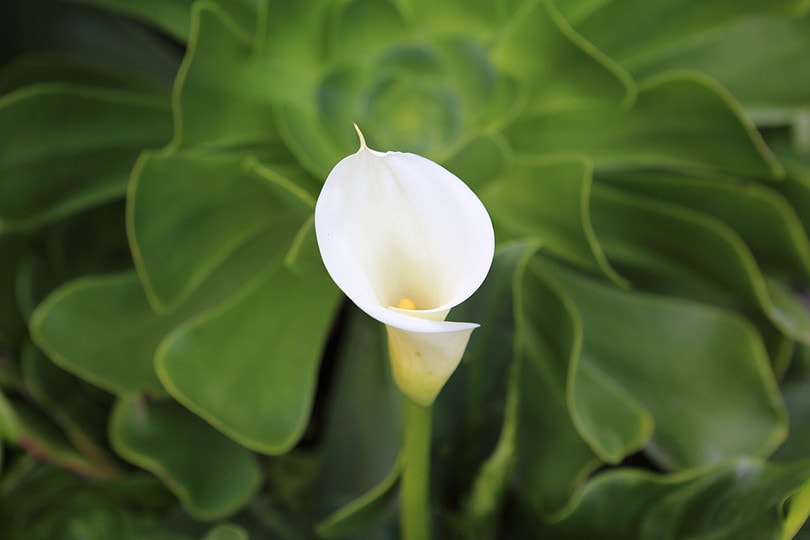How Much & How Often to Water Calla Lilies: Tips, Seasons, & Signs
-
Pete Ortiz
- Last updated:

Water is necessary for all living things, and plants are no exception. Many people struggle with determining how much and when to water their plants, and although the Calla Lily is one of the easiest plants to care for, it does not thrive well when overwatered or in severely dry conditions.
The elegant and majestic flowers of calla lilies make them easy to spot in any garden or home and are a beautiful feature to have. Watering your calla lily is simple, but sometimes we misjudge or realize that the soil is not ideal, which may cause your lily to wilt or die. How often and how much you water calla lillies depends on the season and soil they are in.
In this article, we examine how much and how often to water your calla lily and some tips to take care of them so they can thrive in your garden or home.
When to Water Calla Lillies
Water that is low in lime, such as rainwater, is ideal for your calla lily. When the top layer of soil feels and appears dry, it can indicate that your plant is becoming dehydrated and that the deeper soil is moist. It is essential to keep the top layer of soil hydrated as well.
How to test soil for dryness:
If you feel unsure whether your plant’s soil is sufficiently hydrated, a simple finger test will help guide you. Choose an area near the base of your plant and insert your finger into the soil. If it feels wet or even slightly moist, wait another week before watering your plant. Water it lightly and gradually if it is dry on top and slightly moist in the deeper layers. Water the soil immediately if it feels dry or has visible cracks, and consider increasing the watering frequency by 1.5 times.
Water outdoor Calla Lilies regularly, providing enough water to ensure that the soil is evenly moist. You can improve your soil by adding compost or other organic materials if your soil has poor drainage.
If your lilies are potted, they will dry out much faster than lilies in the ground, and they should be watered regularly to maintain moisture in the potting mix without leaving it too wet and soft. Drainage is vital for water calla lilies to thrive, and good drainage can be provided by a soilless mixture containing coarse materials such as pine bark, mulch, or sand.

How Often Should You Water Calla Lilies?
Watering intervals for calla lilies are typically seasonal. Here is a guide on how often to water your lily according to the seasons.
- Spring: Approximately every 4–5 days
- Summer: Approximately every 2 days
- Autumn: Once every 3 days
- Winter: Approximately every 10 days
In the growing season, your calla lily is at its peak and will require watering at least once a day to keep the soil moist. When your lily is dormant, it won’t require much water. Generally, you will water your plant during dormancy approximately every 7–10 days.
Climate, soil, temperature, and whether you are growing your lilies outdoors or in pots are essential factors that determine how often you should water your plant.
Indoor calla lily plants require constant moisture because pots dry out faster than lilies in the ground. When the weather is arid, spray the area around your calla lily to increase the humidity of the air around it, promoting better growth. On rainy days, stop watering and empty the tray as soon as possible.

How Much Water Does Your Calla Lily Need?
During the growth and flowering stages, the calla lily requires a lot of water; the roots should never dry out during this period. The rest phase of the calla lily begins after it has flowered and should be kept very dry.
Water your lily thoroughly to maintain soil moisture at about 1 inch deep. Potted plants should be watered until the water drips through the bottom of the pot. They need at least 1 inch of water per week, but the flowers or foliage do not need to be watered.
Never allow a calla lily to sit in water for more than 15 minutes.
How To Tell If Your Calla Lily Is Over or Under-Watered
Many people confuse light watering with underwatering. They begin to overwater them as soon as they notice signs of underwatering, which can cause further damage. It is crucial to understand and determine the ideal balance between overwatering and underwatering when caring for calla lilies.
- Leaves may sag or droop
- Leaves may turn brown and curl
- Yellowing can be due to root rot if your lily is standing in too much water.
- Root rot can release an odor
- Poor drainage will lead to soggy soil
- Your lily is not growing or blooming
Tips on How to Take Care of Your Calla Lily
- Avoid extremes in moisture
- Keep soil evenly moist
- Reduce watering when blooming stops
- Regularly check the soil for moisture levels
- Make sure the soil of your plant drains well
- Choose the correct potting soil
- Provide shade for your lily in summer
Conclusion
Although calla lilies are typically easy to care for, it’s important to find the right balance in watering. They thrive in a moist environment, but their soil needs sufficient drainage to ensure it doesn’t get too soggy. During the growth phase, they will need a lot more water; when they are dormant, watering intervals can become much less frequent.
Watering will also depend on whether your lilies are growing in pots indoors or outside in the ground. Regularly checking on the soil’s moisture levels and the condition of your plant’s leaves can help you determine if your calla lily is getting enough or too much water. Once you establish the right balance, your lily will stay with you for the long term.
Featured Image Credit: leoleobobeo, Pixabay
Contents




